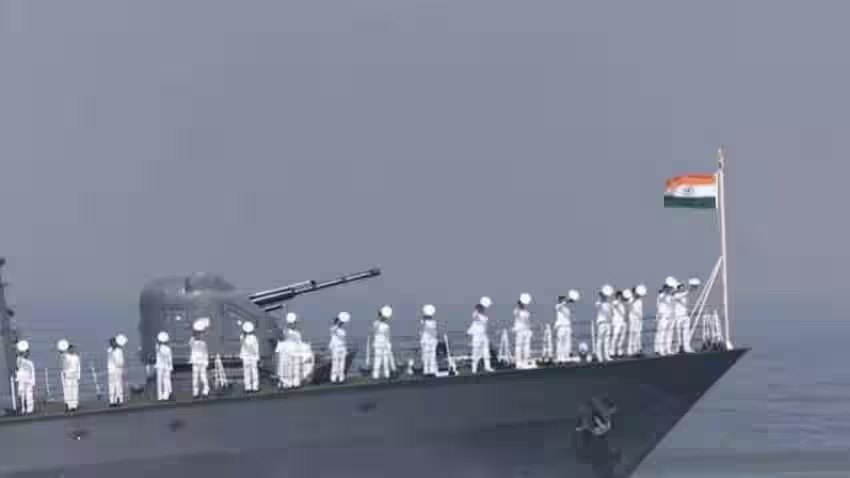
How the Indian Navy can secure its sea lanes
It requires 30 years to build a Navy, said a famous Royal Navy Admiral during World War II, and added that it requires 300 years to build a tradition. We are not far from India’s independence centenary. The country will also be the world’s third richest nation in terms of GDP. What kind of armed forces will India need in 2047? Certainly not the force structure of today conceived two or three decades ago, in the closing years of the 20th century. The Defence Acquisitions Council has approved, in principle, the need for a third aircraft carrier. How large should the carrier be and what will be its role?
Even as we write this, the vital sea lanes of the country are in peril. Shipping companies are reluctant to use the Red Sea and the Suez Canal. Insurance rates for cargo have skyrocketed, making both imports and exports costlier, owing to the indiscriminate attacks on merchant shipping by the Houthis operating from Yemen. The safety of sea lanes is a general public good, and yet only the US and the UK have retaliated against the Houthis.
India, after which the ocean on which all this occurring is named, is in a defensive posture with naval ships merely tasked with anti-piracy patrols. This will hardly dissuade the Houthis, much less punish them for interfering with the general world order. In the years to come, the possibilities of having to fight and win a naval battle will gradually recede. Our two existing aircraft carriers are essentially sea control ships, built to win naval battles by conferring air dominance over the ocean. Only the US, and increasingly the Chinese, have aircraft carriers that can project power and influence political decisions ashore by operating near troublesome shores.
Today, we have the chance to build, buy or acquire a true aircraft carrier, capable of operating 70 to 80 strike aircraft or five squadrons. When a carrier of this nature is present off the shores of a country, decision-makers in the capital are constrained in their freedom to decide what options are open to them. A classic instance of this strategy is the presence of the American carrier USS Gerald Ford off Lebanon, while the Israelis were attacking Gaza. The US, without firing a shot, kept Hezbollah from interfering and at the same time deterred Tehran, at whose bidding the Hezbollah operate.
New Delhi was aware that what the Houthis were doing damaged the national vital interests of India and its maritime trade. New Delhi was also aware that the Houthis would not dare take such a major step without the blessing of the Ayatollahs in Tehran. India’s External Affairs Minister quite rightly made a courageous and bold journey to discuss matters with Teheran. There, he stressed the cooperative enterprises between Iran and India and mentioned the aggression by the Houthis. Now consider how much more effective the EAM’s trip to Tehran would have been if simultaneously, a large Indian aircraft carrier was operating off Aden. That would have been a classic instance of the use of navies as instruments of state policy — mainly foreign policy.
In 2047, as the world’s third most powerful nation, New Delhi will be expected to contribute to the maintenance of world order and the public good, and not merely be a consumer of the public good. This overarching formula applies to all three armed forces. No longer will they be able to cocoon themselves in a timid defensive posture, concerned only with territorial integrity. In fact, for the world’s third most powerful nation, to say that they are obsessed with territorial invasion would be laughable.
There are deep issues here for the Army and Air Force. In 2047, India’s GDP would be in the region of $ 30 trillion. The defence budget of that at 2 per cent would be approximately $600 billion or roughly what the US defence budget is today. The Army’s share of that amount at the present 60 per cent would be $360 billion. Would anyone contend that the major portion of $360 billion is spent on keeping 6,00,000 soldiers guarding the Himalayan heights? Surely the Indian army cannot be kept tied down on the border by an incompetent political class unable to come to a border settlement with China?
There are similar questions for the Air Force and Navy. Will the Air Force with a budget of $150 billion continue to issue a doctrine that speaks of prioritising territorial air defence? Will the Navy be kept stunted by limiting it to 40,000-tonne aircraft carriers? The CDS should be tasked with some kind of forward planning. The world’s third most powerful nation will be a regional power guaranteeing the safety of small nations in the Indian Ocean and South Asia. A beginning can be made by permitting the Indian Navy a true power projection aircraft carrier of about 80,000 tonnes.
The PLA Navy has just commissioned its third carrier of 80,000 tonnes with three electro-magnetic catapults. No doubt there will be more in the pipeline. Beijing is angling for a direct land route to the Bay of Bengal through Myanmar, taking advantage of the insurgency there, in which case we will lose our Malacca advantage. Without an Indian carrier force, we may well be overwhelmed in our home waters.
Author : Raja Menon, a Former Rear Admiral in the navy, is the author of A Nuclear Strategy for India
